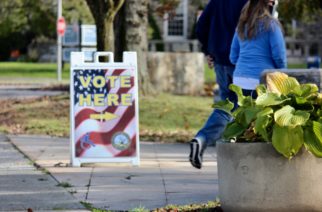
It is disappointing that New York City Mayor Bill de Blasio still has a poor understanding about his relationship with the Metropolitan Transportation Authority after three years in office for management and funding of its Capital Program. His ongoing theme is that because the MTA is a state agency, he has no control over its capital program, operations and funding makes no sense when you look at the facts.
Mayor de Blasio appoints four of the 15 member MTA Board. One of his members, NYC DOT Commissioner Polly Trottenberg previously worked for the US Department of Transportation, has an excellent background in transit. This includes how the MTA, New York City, New York state and Washington D.C. partner together in improving transit.
Contrary to Mayor de Blasio’s rhetoric, New York City has significant influence with both Albany and the MTA. Bronx Assembly Speaker Carl Heastie appoints one of the four-member MTA Capital Program Review Board. They must approve all MTA Five Year Capital Plans and plan amendments, including adding new projects or funding. There are also 59 fellow Democrats in the state Assembly, out of 150, from New York City who owe their allegiance to Heastie. Both New York City Republican Assembly members Ronald Castorina and Nicole Malliotakis from Staten Island are pro transit. Twenty-two of the 24 New York City state senators are members of the Democratic state Senate caucus. They are led by Westchester state Senator Andrea Stewart-Cousins, who is friendly toward the Big Apple. Three of the five member Independent Democratic State Senate Conference chaired by Bronx/Westchester member Jeffrey Klein are from New York City. Both New York City Republican Senators Martin Golden (Brooklyn) and Andrew Lanza (Staten Island) are friendly toward transit.
The federal planning process to access U.S. Department of Transportation Federal Transit Administration funding is managed by the New York Metropolitan Transportation Council (NYMTC). New York City DOT Commissioner Trottenberg and New York City Department of Planning Director Carl Weisbrod each have a vote along with representatives from the MTA, Nassau County, Suffolk County, Putnam County, Rockland County, Westchester County and New York State Department of Transportation. In Fiscal Year 2016, NYMTC decides how over $1.2 billion in U.S. DOT FTA formula funding is distributed among the voting members. This includes $35 million in Buses and Bus Facilities; $668,289,033 in State of Good Repair and $573,253,980 Urbanized Area federal funding. It requires a total consensus of all voting members before these funds can be allocated to each transit operator. Prior to reaching agreements, neither the MTA or NYC DOT can complete any grant application process that would result in U.S. DOT FTA entering into a formal grant agreement to obligate funding. All capital projects contained within these grant applications also have to be included within the local NYMTC Transportation Improvement Program (TIP) and New York State Transportation Improvement Program (STIP). Adoption of the NYMTC TIP also requires a unanimous vote among all members.
Too many municipal elected officials, including de Blasio, who complain about the MTA have forgotten their transit history. In 1953, the old NYC Board of Transportation passed on control of the municipal subway system, including all its assets, under a master lease and operating agreement to the newly created New York City Transit Authority. Under Governor Nelson Rockefeller in the 1960s, the MTA was created. The governor appointed four board members. Likewise, the mayor four more members, and the rest were appointed by suburban county executives. No one elected official controlled a majority of the votes. As a result, elected officials have historically taken credit when the MTA or any operating subsidiary such as NYCT would do a good job. When operational problems occurred or fare increases were needed — everyone says ‘don’t blame me, I’m only a minority within the Board.’
Decade after decade, NYC Mayors, Comptrollers, Public Advocates, City Council Presidents, Borough Presidents and City Council members would all play the same sad song — if only we had majority control of the Board, things would be different. All have long forgotten that buried within the 1953 master agreement between the City of New York and NYC Transit is an escape clause. NYC has the legal right at any time to take back control of its assets. This includes the subway and most of the bus system. Actions speak louder than words. If de Blasio feels he could do a better job managing the MTA including running the nation’s largest subway and bus system, he should man up and regain control. Instead of complaining why not come up with the $2.5 billion that the city still owes toward funding the MTA 2015 – 2019 Five Year Capital Program. Let the professionals as opposed to career politicians run transit.
Larry Penner is a transportation historian and advocate who previously worked 31 years for the US Department of Transportation Federal Transit Administration Region 2 NY Office)









